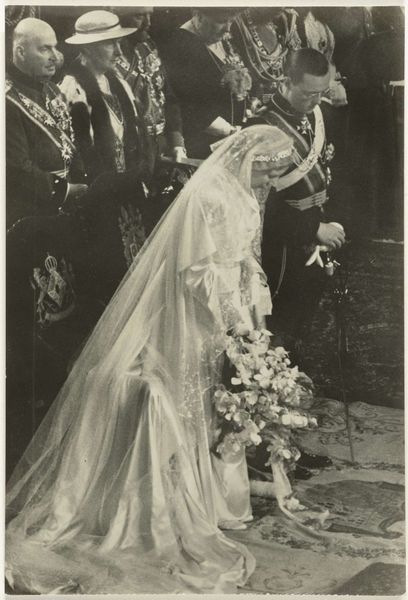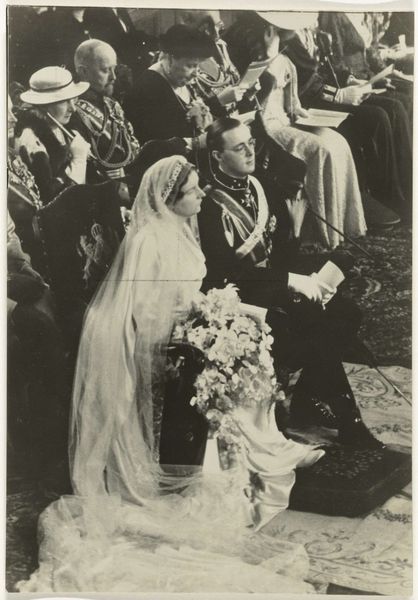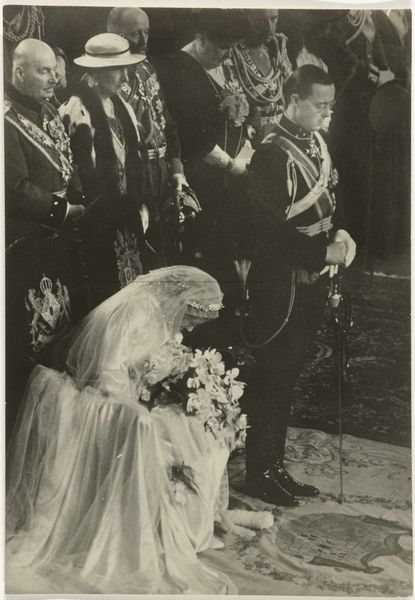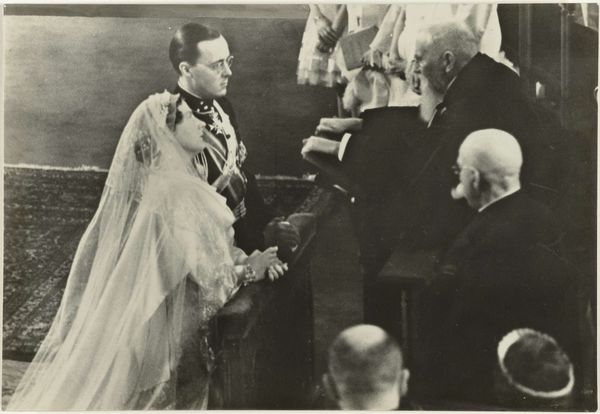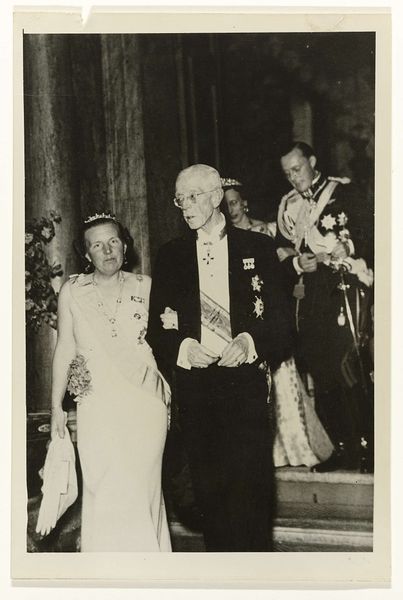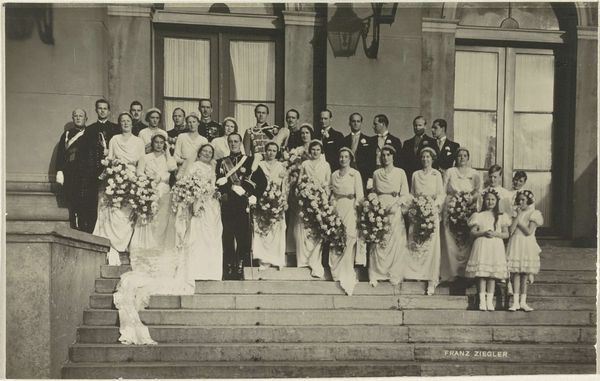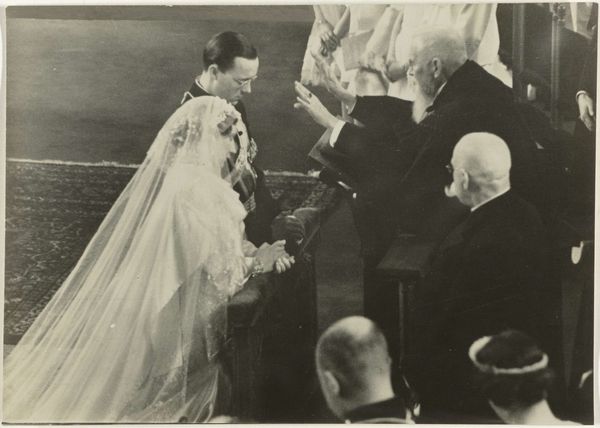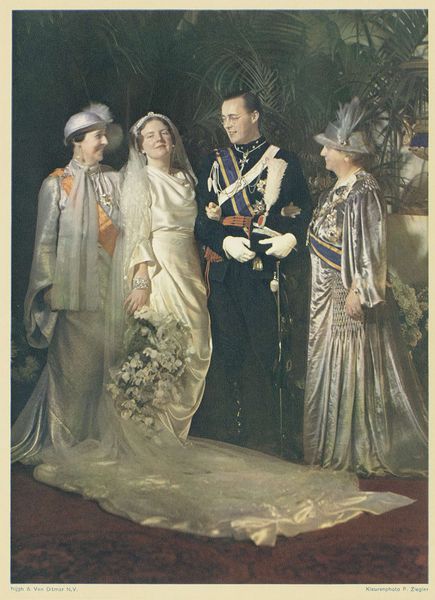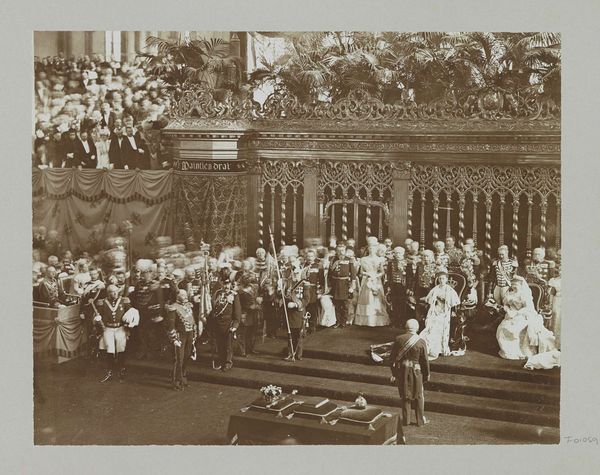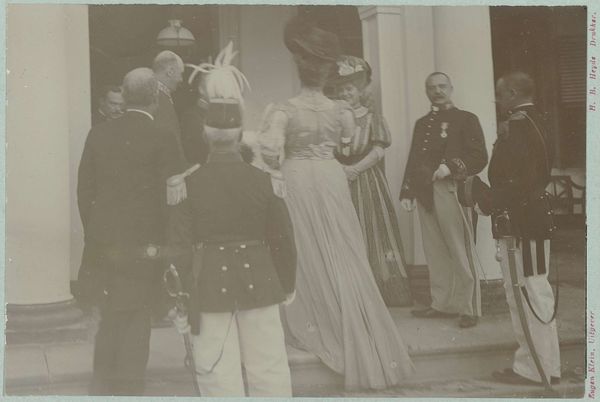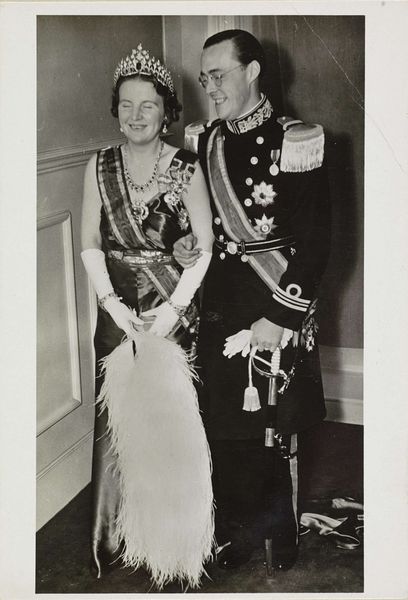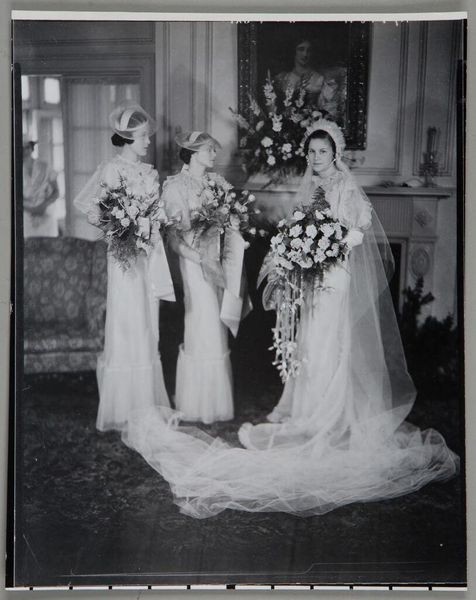
photography, gelatin-silver-print
#
portrait
#
wedding photograph
#
wedding photography
#
photography
#
culture event photography
#
couple photography
#
gelatin-silver-print
#
history-painting
Dimensions: height 101 mm, width 145 mm
Copyright: Rijks Museum: Open Domain
Curator: I’m immediately drawn to the formality, the stiff solemnity, captured in this gelatin-silver print. The careful arrangements of forms—the dark suits, the pale faces, the linear repetition—it all speaks to control and precision. Editor: This is Erich Salomon's "Huwelijk van prinses Juliana en prins Bernard, 1937," likely taken in 1937, documenting the wedding of Princess Juliana and Prince Bernard. Beyond the aesthetic, we need to acknowledge this event's significant role in Dutch history, and the sociopolitical implications of such a union. Curator: Of course, history is built upon such images, but I can't help but see first the high contrast, and how that sharp tonal range delineates status so explicitly; the lighting almost sculpts their features, imbuing a monumental feel. Editor: Agreed, and we must look at Salomon himself. A Jewish man, forced to flee Germany later on, capturing the rise of fascism at that time, through the spectacle of royal marriage—there is an inherent tension here. This image marks not just a celebration, but a precarious moment in European history with an important union. Curator: Interesting. I was not even considering that narrative element. Focusing on design alone, observe how the eye is led by the bride's veil, moving vertically upwards into the assembled royalty. It almost serves to create a sacred geometry within the composition. Editor: Exactly. This image becomes a powerful symbol of dynasty and the desire for stability. It also prompts critical questions of national identity and representation amidst a shifting global order, considering Bernard's German roots at the time of rising Nazism. What does it tell us about performativity in power and gender roles? Curator: Yes, but how cleverly the formal elements reinforce it. Editor: Indeed. Art acts as both a reflector of reality, and also as an important producer of culture and social practice in its time. Curator: I appreciate how you’ve framed this discussion by pulling in so many social components from that particular time, and how Salomon's photographic eye created an artwork with important commentary for the period and today. Editor: And likewise, you helped bring into focus its impact through structure and visual language. A valuable conversation that only strengthens its message.
Comments
No comments
Be the first to comment and join the conversation on the ultimate creative platform.
